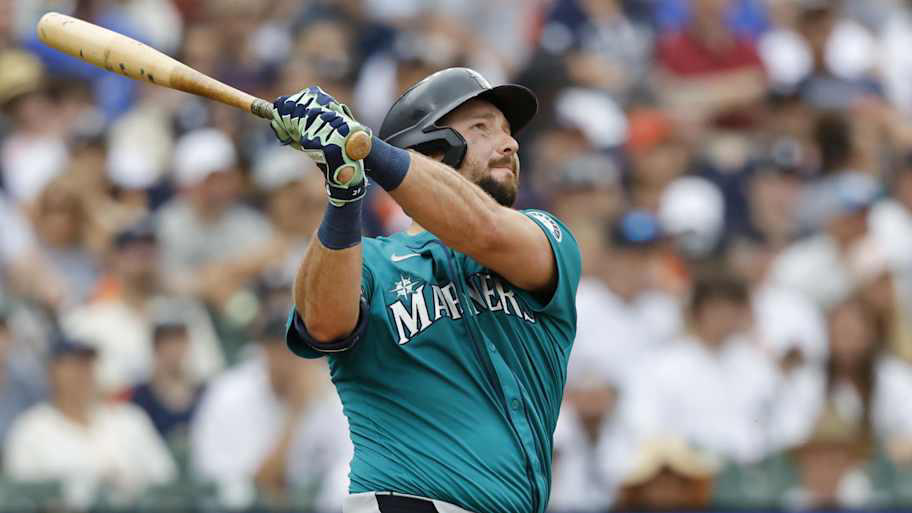Fantasy sports have transcended mere pastime to become a global phenomenon, captivating millions with their blend of strategic thinking, statistical analysis, and the thrilling unpredictability of live sports. Whether you’re a seasoned veteran or a curious newcomer, the ultimate goal remains the same: Fantasy League Dominance. This isn’t just about winning a single week; it’s about consistently outsmarting your opponents, building an unassailable roster, and hoisting that championship trophy at season’s end. This comprehensive guide will dissect the multifaceted layers of fantasy league success, offering actionable insights and advanced strategies to elevate your game. We’ll explore everything from pre-draft preparation to in-season management, delving into the statistical nuances and psychological warfare that define true fantasy mastery.
Pre-Draft Preparation is Paramount

The draft is the cornerstone of your fantasy season. Your success, or failure, often hinges on the quality of your selections. A meticulous pre-draft strategy is not just recommended; it’s absolutely essential for laying a strong foundation.
Key Elements of Pre-Draft Excellence:
- Understand Your League’s Rules and Scoring: This is non-negotiable. Is it a standard scoring league, Half-PPR, Full-PPR? Are there bonuses for long touchdowns or big plays? Do kickers and defenses matter more or less? Are there unique roster spots, like a “flex” spot that allows for a running back, wide receiver, or tight end? Understanding these nuances dictates player value and your drafting strategy. A player’s value can fluctuate wildly across different scoring formats. For instance, a wide receiver who catches a lot of short passes might be a PPR (Points Per Reception) monster but only average in a standard league.
- Conduct Thorough Player Research: Don’t just rely on default rankings. Dive deep into individual player statistics, injury histories, coaching changes, team dynamics, and strength of schedule. Identify breakout candidates (players poised for a significantly better season than expected) and potential busts (overvalued players likely to underperform). Look beyond the basic stats; consider target shares, red zone touches, snap counts, and historical consistency. Websites dedicated to fantasy sports, advanced analytics platforms, and beat writers offer invaluable insights.
- Develop a Tiered Ranking System: Instead of a linear ranking (1, 2, 3…), create tiers of players. For example, “Elite Quarterbacks,” “Strong RB1s,” “High-Upside WR2s.” This approach provides flexibility during the draft, allowing you to adapt to how your opponents are drafting. If all the top-tier running backs are gone, you know it’s time to pivot to the next best position in your next tier. This prevents reaching for players just because they are next on a list.
- Practice Mock Drafts Extensively: Mock drafts are your simulated battlefield. Participate in multiple mocks with different draft positions to get a feel for how different strategies play out. Experiment with various approaches: “Zero RB,” “Robust RB,” “Late-Round QB,” etc. This helps you understand average draft positions (ADPs) and identify where value can be found. It also builds confidence and quickens your decision-making on draft day.
- Identify Sleepers and Avoid Landmines: A “sleeper” is an overlooked player who could deliver significant value well beyond their average draft position. These are often late-round gems. Conversely, a “landmine” is a player whose high draft cost doesn’t align with their probable production, often due to injury risk, new team situations, or statistical regression. Identifying both is crucial for maximizing your roster’s upside.
- Formulate a Draft Strategy (but Remain Flexible): Decide on a general strategy (e.g., prioritize running backs early, target a top-tier tight end, wait on quarterback). However, be prepared to deviate. The draft is dynamic. If a top-ranked player unexpectedly falls to you, or if your preferred strategy is being countered by other managers, adapt. Rigidity is a weakness in fantasy football.
Draft Day Execution
Draft day is where preparation meets pressure. Effective in-the-moment decision-making is critical to capitalizing on value and avoiding common pitfalls.
Strategies for a Winning Draft:
- Value Over Position: Don’t get fixated on drafting a specific position if a significantly more valuable player at another position is available. If you planned to take a running back, but an elite wide receiver falls unexpectedly, take the value. Your tiers will guide you here.
- Monitor Average Draft Position (ADP): Use ADP as a guide, not a rule. It tells you where players are generally being drafted. If a player is falling significantly below their ADP, it might be a steal, or it might be a red flag. Investigate. Conversely, avoid reaching for players too far above their ADP unless you have very strong, specific reasons.
- Balance Upside and Floor: Every pick involves a trade-off between a player with a high “floor” (consistent, reliable points week-to-week) and a high “upside” (potential for explosive, league-winning performances but with higher risk). A balanced roster typically has a mix of both, especially in the early rounds.
- Avoid Drafting Players on Bye Weeks in Early Rounds: While not a deal-breaker, stacking too many early-round players with the same bye week can create a significant roster challenge later in the season. Be mindful, especially with your core starters.
- Handcuff Your Top Running Backs: “Handcuffing” means drafting the backup running back for your top-tier running backs. If your starter gets injured, you immediately have their replacement, ensuring continuity of production. This is a crucial insurance policy, particularly for high-volume bell-cow backs.
- Don’t Overvalue Your Favorite Team’s Players: It’s tempting to draft players from your favorite real-life team, but this can lead to biased decisions. Evaluate players objectively based on their fantasy value, not your fandom.
- Manage Your Draft Clock: In online drafts, the clock is your enemy. Have your tiered rankings ready to make quick decisions. If you’re unsure, defaulting to the highest-ranked player in your next tier is often the safest bet.
- Understand Positional Scarcity: Some positions are deeper than others. In many leagues, elite running backs are scarcer than wide receivers. This often dictates drafting strategy – securing a top-tier RB early might be more crucial. Quarterback and tight end often have a steep drop-off after the top few, making early investment in those positions a valid strategy for some.
In-Season Management
The draft is only the beginning. True fantasy dominance is achieved through shrewd in-season management, week after week. This is where active participation separates the champions from the also-rans.
Weekly Management Imperatives:
- Set Your Lineup Strategically: This seems obvious, but it’s often mishandled. Don’t just set and forget. Consider matchups (e.g., a strong defense against a struggling offense), injury reports (always check up to game time), and recent performance trends. Sometimes a “lesser” player in a favorable matchup is a better start than a “star” in a terrible one.
- Master the Waiver Wire: The waiver wire is a treasure trove of opportunity. It’s where you pick up players dropped by other managers, or emerging talents who weren’t drafted. Prioritize high-upside players, backups to injured stars, or players with favorable upcoming matchups. Be proactive, not reactive. Waiver priority and FAAB (Free Agent Acquisition Budget) management are crucial.
- Execute Smart Trades: Trading is a high-level skill. Don’t trade just to trade. Identify roster weaknesses and seek to acquire players who fill those gaps. Sell high on players who have performed above expectations and buy low on underperforming stars who you believe will rebound. Always aim to get more value than you give up. Be respectful but firm in negotiations.
- Monitor Injury Reports Relentlessly: Injuries are the bane of fantasy football. Stay glued to reliable injury news sources. Understanding injury timelines, potential replacements, and the impact on a player’s production is critical for quick adjustments to your lineup and waiver wire moves.
- Analyze Matchups and Strength of Schedule (SoS): Look ahead at your players’ schedules. A player might be performing well, but if they face a string of top defenses in upcoming weeks, their production might dip. Conversely, a struggling player with an easy upcoming schedule could be a breakout candidate.
- Manage Your Bench Effectively: Your bench isn’t just a place for discarded players. Use it for high-upside stashes (players who might break out later), handcuffs, or players with late-season potential. Don’t be afraid to drop players who aren’t producing or have limited upside to make room for more valuable waiver wire additions.
- Stay Informed with News and Analysis: Follow multiple reputable fantasy news sources, podcasts, and analysts. Absorb as much information as possible, but always apply your own critical thinking. Not every “hot take” is accurate.
- Don’t Overreact to Single-Game Performances: One bad game doesn’t make a player a bust, just as one great game doesn’t make them a superstar. Look for trends over several weeks before making drastic roster changes. Consistency is key.
Advanced Strategies

Beyond the fundamentals, certain advanced tactics can give you a significant edge over your competition, particularly in deeper or more competitive leagues.
Tactics for Elite Performance:
- Streaming Quarterbacks/Defenses/Kickers: Instead of drafting and sticking with one player at these positions, “stream” them. This involves picking up players each week based on favorable matchups, then dropping them for the next week’s best option. This maximizes weekly points and allows you to use earlier draft capital on more impactful positions.
- Targeting Red Zone Usage and Target Shares: These are advanced metrics that provide deeper insight into a player’s potential. A running back who consistently gets carries inside the 20-yard line has a high “red zone usage” and a greater chance of scoring touchdowns. A wide receiver with a high “target share” (percentage of team passes thrown to them) is likely to have consistent receiving volume.
- Understanding Game Scripts: Consider how a game is likely to play out. If a team is expected to be trailing significantly, their quarterback might throw more, benefiting their wide receivers. If a team is projected to have a big lead, their running back might get more carries in the second half.
- Exploiting Bye Weeks: While managing your own bye weeks, you can also look to exploit your opponents’ bye weeks. If an opponent has multiple key players on bye, it might be a good week to target a win against them, or even propose a trade to offload a player with an upcoming bye week.
- Zero RB / Robust RB / Late-Round QB: These are specific draft strategies. Zero RB involves drafting wide receivers, tight ends, and quarterbacks in the early rounds, and then targeting high-upside running backs in later rounds. Robust RB is the opposite: loading up on elite running backs early. Late-Round QB is self-explanatory, waiting until the very end to draft a quarterback, relying on streaming or finding a breakout. Understanding these approaches and when to deploy them can be a game-changer.
- Punt Strategy (in season): Sometimes, especially if facing a very strong opponent, you might decide to “punt” a specific week (intentionally sacrifice it for a loss) to save waiver wire budget or make strategic drops/adds that benefit you more in future weeks. This is a risky but sometimes necessary move.
- Leveraging Player News for Early Access: Be incredibly quick to react to breaking news, such as an unexpected injury. Being the first to grab a high-upside backup on the waiver wire before others realize the news can be immensely valuable.
- Trade Deadline Strategies: As the trade deadline approaches, identify teams that are clearly out of contention. They might be more willing to part with their stars for future draft picks (if your league has keeper or dynasty rules) or for players who can help them “play spoiler.”
Mind Games and Maintaining Focus
Fantasy football isn’t just about statistics; it’s also a psychological battle. Understanding and exploiting the human element can provide a subtle yet powerful advantage.
The Mental Edge:
- Don’t Show Your Hand: Avoid revealing too much about your strategy or what players you’re targeting. Keep your opponents guessing. This extends to waiver claims and trade interests.
- Maintain a Level Head: Don’t get overly emotional after a bad week or a stroke of bad luck. Stay calm, analyze the data, and make rational decisions. Panic moves rarely pay off.
- Utilize League Chat (Wisely): Use league chat sparingly but effectively. You can use it to float trade ideas, subtly boast after a big win (to intimidate), or even spread a little misinformation (e.g., feign disinterest in a player you actually want). But avoid being a constant nuisance.
- Project Confidence: Even if you’re internally panicking, project an air of confidence and control. This can make opponents second-guess their own strategies or make them less likely to challenge your moves.
- Recognize Opponent Tendencies: Just as you study player stats, observe your opponents’ tendencies. Are they waiver-wire heavy? Do they panic after a loss? Are they susceptible to certain types of trade offers?
- Manage Expectations (Yours and Others’): Be realistic about your team’s prospects. Not every player will hit, and some weeks will be frustrating. For others, tempering expectations can lead them to drop players you might want to pick up.
- The Art of the “Bad” Offer: Sometimes, sending a genuinely “bad” trade offer (very one-sided) can gauge an opponent’s desperation or signal that you’re not easily swayed. It’s a subtle way to test the waters.
- Avoid Tit-for-Tat Moves: If an opponent makes a bold waiver claim or a surprising trade, resist the urge to immediately counter with an equally drastic move just to keep up. Stick to your plan and make moves that benefit your team.
The Playoff Push
The regular season is about making the playoffs; the playoffs are about winning it all. Strategies shift as you approach the final weeks.
Keys to Playoff Victory:
- Analyze Playoff Schedules: Reiterate this point with more emphasis. Your team’s playoff schedule is critical. Prioritize players who have favorable matchups in the crucial semi-final and championship weeks. This might even mean trading away a star player with a terrible playoff schedule for a lesser player with a pristine one.
- Depth is Gold: Injuries often ramp up late in the season. Having strong depth on your bench is paramount to navigating these challenges. Don’t be afraid to stash high-upside backups, even if they don’t have immediate starting value.
- Waiver Wire for Playoff Streams: The waiver wire remains crucial for finding last-minute gems, especially for positions you stream (QB, DEF, K) or to replace injured players. Be aggressive if needed.
- Consolidate Talent (if possible): Sometimes, trading multiple lower-tier players for one elite player can consolidate talent on your roster for the playoff push. This reduces your weekly lineup decisions and maximizes your top-end scoring.
- Minimize Risk: As the playoffs approach, focus on reliable production over high-risk, high-reward plays, especially in your starting lineup. One dud performance can end your season.
- Monitor Weather Forecasts: In real-life football, extreme weather (snow, heavy rain, high winds) can significantly impact offensive production. Factor this into your lineup decisions for playoff games.
- Study Opponent’s Playoff Rosters: Know your playoff opponents’ strengths and weaknesses. Which players are their consistent scorers? Which positions are vulnerable? This can inform your final waiver moves or even last-minute trade attempts.
- No More “What Ifs”: Once the playoffs start, there’s no room for second-guessing. Trust your decisions, set your best lineup, and ride with it. Overthinking can lead to paralysis by analysis.
The Post-Season
True dominance extends beyond the final whistle. The off-season is a crucial period for reflection, learning, and preparing for next year’s conquest.
Off-Season Mastery:
- Review Your Season: What worked? What didn’t? Which players exceeded expectations, and which were busts? Analyze your draft picks, waiver claims, and trades. Identify your strengths and weaknesses as a fantasy manager.
- Learn from Mistakes: Every fantasy manager makes mistakes. The key is to learn from them. Did you overvalue a certain position? Did you hold onto an injured player for too long? Use these lessons to refine your strategy for the next season.
- Stay Updated on Offseason News: Even in the off-season, news breaks. Keep an eye on coaching changes, free agency signings, trades, and injury updates. These can significantly impact player values for the upcoming year.
- Early Player Rankings and Projections: Start to formulate your preliminary player rankings and projections for the next season. Identify early sleepers and players who might be undervalued in the coming draft.
- Engage in Dynasty/Keeper League Analysis (if applicable): If your league is a dynasty or keeper league, the off-season is even more critical. Analyze player longevity, rookie prospects, and trade values to build a long-term winning franchise.
- Tweak Your Strategy: Based on your review, consider making adjustments to your overall draft strategy or in-season management approach. Are there new analytical tools you want to incorporate? New resources to follow?
- Connect with Your League Mates: Maintain relationships with your league mates. Friendly banter and discussions in the off-season can build camaraderie and lay the groundwork for future trade negotiations.
Conclusion
Fantasy League Dominance likely explores the strategies and factors contributing to consistent success in fantasy sports leagues. It probably delves into aspects such as effective drafting techniques, shrewd waiver wire pickups, optimal lineup management, and perhaps even psychological approaches to outmaneuver opponents. It might also analyze the role of data analytics, injury tracking, and understanding player trends in achieving a dominant position within a league. Ultimately, it aims to provide insights and actionable advice for fantasy sports enthusiasts seeking to elevate their game and consistently finish at the top.



